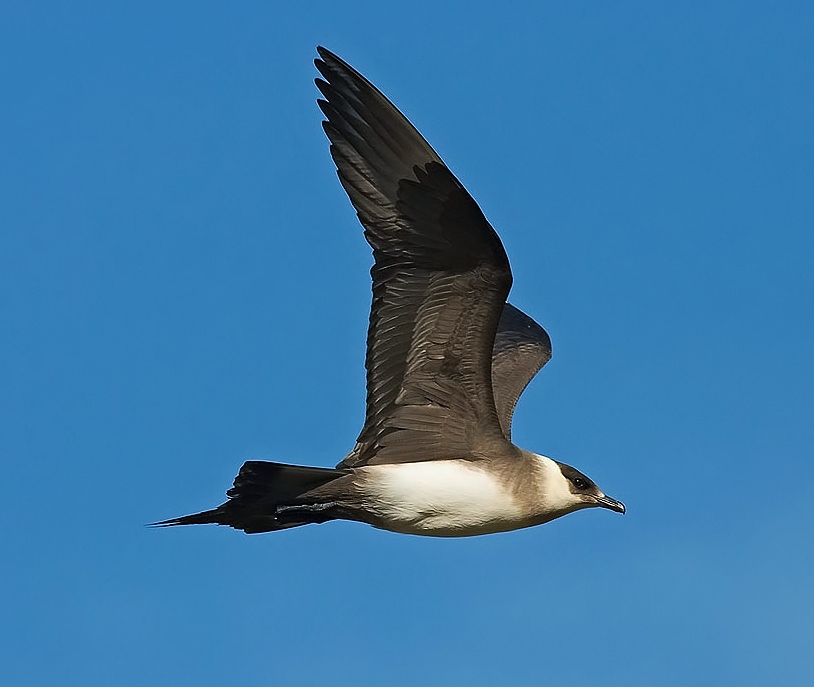 |
| Photo by Jari Peltomäki (Luonto Portti) |
Common name:
Arctic skua (en); moleiro-parasítico (pt); labbe parasite (fr); págalo parásito (es); schmarotzerraubmöwe (de)
Taxonomy:
Order Charadriiformes
Family Stercorariidae
Range:
These birds breed across the northern latitudes of the northern hemisphere, as far south as Scotland and as far north as Svalbard. The migrate south, passing over all oceans and wintering as far south as South Africa, southern Australia and Tierra del Fuego.
Size:
These birds are 41-48 cm long and have a wingspan of 107-125 cm. They weigh 300-650 g.
Habitat:
Arctic skuas nest island and along the mainland coasts, in areas of tundra near freshwater bodies. Outside the breeding season then spend most of their time on the ocean, typically within a few kilometres of land.
Diet:
These birds are kloptoparasites, obtaining most of their food by stealing fish from auks, gulls and terns. They will also eat small rodents, adult and fledgling passerines, wader chicks, birds eggs, insects and berries.
Breeding:
The Arctic skua breeds in May-August. They form loose colonies, with each pair nesting in a shallow depression on the ground, lined with grasses and lichens. There the female lays 2 greenish-grey eggs with brown markings, which are incubated by both parents for 25-28 days. The chicks leave the nest within 2 days of hatching, but will stay with the parents and receive regurgitated food from both parents until fledging, which takes place 25-30 days after hatching.
Conservation:
IUCN status – LC (Least Concern)
This species has a very large breeding range and the global population is estimated at 0,5-10 million individuals. The population is suspected to be stable in the absence of evidence for any declines or substantial threats.







